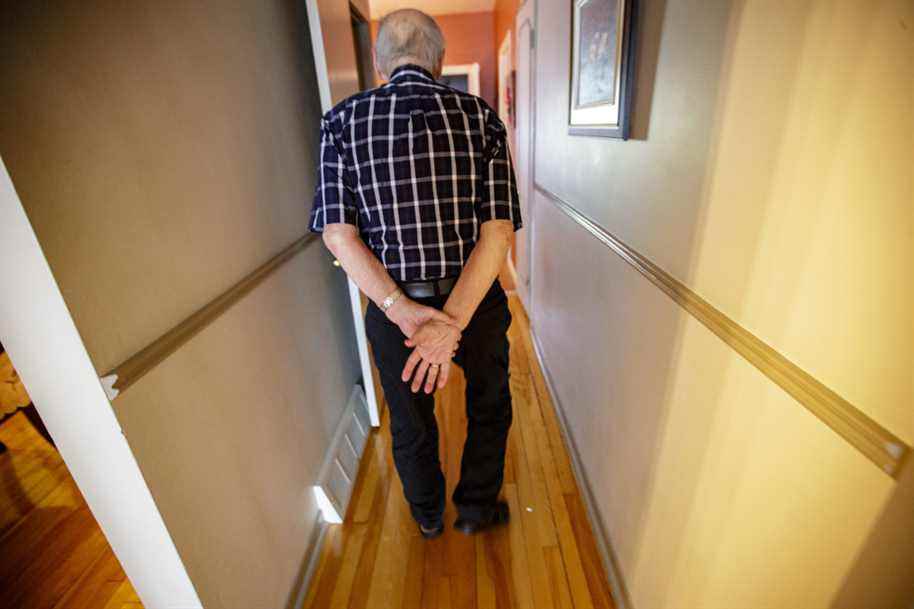Living and aging at home, with loved ones and in one’s environment is a wish expressed many times by seniors. This desire has clearly strengthened since the pandemic disaster observed in CHSLDs and collective settings during the first wave of COVID-19. In a context where one in four adults will be aged 65 and over within the next ten years, how can we meet the demand for care and services that is already exploding? Is it possible to respond to this legitimate expectation of being able to continue one’s life at home despite a loss of autonomy or health problems?
Posted at 2:00 p.m.
In Quebec, care and services for the elderly come under the Support for the Autonomy of Elderly Persons (SAPA) program of the Ministry of Health and Social Services (MSSS) and are available in each region: nursing care, psychosocial services, rehabilitation , equipment loan, day centre, etc. The demand for services is high and, before the pandemic, we were only able to meet 5% of users’ needs with, on average, less than two hours of service per week. This is without counting that currently, more than 45,500 people are waiting for services.
Present in all regions of Quebec, the Home Help Social Economy Enterprises (EÉSAD) offer assistance with domestic tasks, personal assistance (bathing, getting up and going to bed, dressings, etc.) and respite for caregivers. These services are only partially funded by the state through the Home Services Financial Assistance Program. Community organizations complete the service offer: meals on wheels, transport-accompaniment, respite, etc. Limited by the level of funding and the difficulties in recruiting labour, these organizations cannot currently expand their service offer.
The desire to continue his life at home therefore comes up against many pitfalls. Due to an insufficient level of services, access delays or the exhaustion of loved ones, many seniors see their condition deteriorate and must be placed on the waiting list in a CHSLD or an intermediate resource (IR ). Failing to receive the required assistance, others will opt or resign themselves to living in collective settings such as private seniors’ residences (RPA), but the high cost of this option limits accessibility.
The conclusions of recent studies and the opinions of experts converge: home support is an essential option and recourse to accommodation in a CHSLD or “seniors’ home” must be reserved for people who require a level of assistance and high care.
Funding for home support must imperatively be increased and the range of services expanded. The time slots should be longer and cover weekends and holidays. This solution is even less costly for the state than the current institutional approach.
Interesting methods, adapted to the Quebec context, were analyzed. Among these, the creation of an autonomy allowance allocated according to the needs profile (Iso-SMAF profile) has several advantages. On the one hand, it allows the recipient to use the allowance to purchase the services they require from the home support service providers of their choice (CLSC, EÉSAD, community organization, accredited private company), thereby distributing the burden of a diversified service offer between the public, community and private sectors. On the other hand, this method of financing allows for tight budgetary control by preventing sums from being used for other purposes within the establishments, as is currently the case. It was essentially the autonomy insurance project spearheaded by Minister Réjean Hébert in 2013. The bill was not passed given the hasty call of the 2014 elections, but it remains relevant and necessary.
It will also be necessary to think about the status of the collective environments that are the RPA. Booming, particularly in Quebec, they are largely financed by public funds, in particular thanks to the tax credit for home support and the purchase of services by public establishments. While CHSLDs have high occupancy rates and can no longer meet demand, RPAs are gradually taking over in terms of accommodation in a process of silent privatization of accommodation.
Seniors demand assistance and care services so that they can continue their life where they have chosen to live, in an environment they know, surrounded by their loved ones and integrated into their community. They wish to preserve their functional autonomy for as long as possible and retain their decision-making autonomy. They are also concerned that their loved ones do not burn out. For them, the “seniors’ home” is their home, their accommodation. This is what the citizen movement “Aging at home is winning” claims.1. Created so that the voice of seniors is heard in the public space, the movement has received the support of thousands of seniors or people in the process of becoming seniors. The government must respond to this public concern by prioritizing sufficient and appropriate public funding for home care services.

